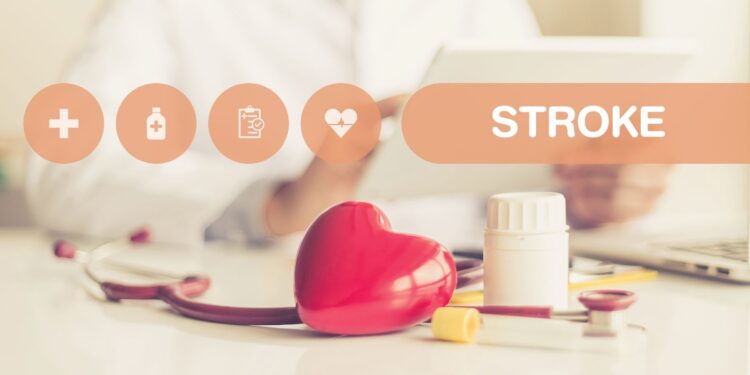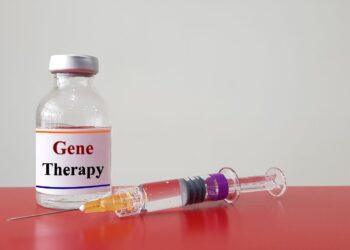Timothy Olyphant, an American actor known for his roles in “Justified” and “Deadwood”, suffered a stroke in his 30s. Knowing the symptoms of a stroke can save lives, and Timothy Olyphant’s experience can provide some valuable advice.
The symptoms of a stroke include sudden numbness or weakness in the face, arm, or leg, especially on one side of the body. Other symptoms may include sudden confusion, trouble speaking, dizziness, or loss of coordination.
In Timothy Olyphant’s case, he experienced a sudden loss of coordination and balance while filming a movie. He initially ignored the symptoms, but they persisted, and he eventually sought medical attention, which saved his life.
It is essential to act quickly when you experience symptoms of a stroke. Call emergency services immediately and seek medical attention. Remember, every minute counts in stroke treatment, and quick action can significantly improve the chances of survival and recovery.
What is a Stroke?
A stroke is a medical emergency where the blood supply to the brain is stopped due to a blocked artery or a burst vessel. It can disrupt the brain’s cells, leading to permanent damage and disability if not treated quickly.
According to Timothy Olyphant, it is important to be aware of the symptoms of a stroke to recognize it quickly and seek the help of medical professionals. So let’s explore the signs of a stroke to better understand it.
Timothy olyphant stroke
Strokes occur when blood flow to the brain is interrupted, leading to brain damage and other serious health consequences. There are two main types of strokes: ischemic and hemorrhagic strokes.
Ischemic strokes occur when a blood clot blocks a blood vessel that supplies blood to the brain, leading to a shortage of oxygen and nutrients. This type of stroke accounts for about 87% of all strokes.
Hemorrhagic strokes occur when a weakened blood vessel in the brain ruptures and causes bleeding into the brain tissue. This type of stroke is less common but often more severe than ischemic.
Common stroke symptoms include:
- Numbness or weakness on one side of the body.
- Difficulty speaking or understanding speech.
- Sudden headache.
- Confusion.
- Difficulty seeing with one or both eyes.
You must seek immediate medical attention if you suspect someone has a stroke.
Pro Tip: Maintaining a healthy lifestyle and regular medical checkups can help reduce your risk of stroke.
How strokes occur in the brain
A stroke occurs when the blood supply to a part of the brain is disrupted or reduced, causing brain cells to die. There are two types of strokes, ischemic stroke and hemorrhagic stroke.
Ischemic stroke happens when a blood clot blocks an artery or vessel that supplies blood to the brain. Hemorrhagic stroke occurs when a blood vessel in the brain ruptures and causes bleeding.
Symptoms of a stroke include sudden weakness or numbness in the face, arm or leg, confusion, trouble speaking or understanding speech, vision problems, severe headache, and dizziness or loss of balance.
Timothy Olyphant, a Hollywood actor recently spoke about his experience with stroke. He shared that after experiencing symptoms like droopy face and having trouble speaking, he went to the hospital immediately and received treatment.
If you recognize any of the symptoms of a stroke, call emergency services immediately as timely medical attention can make the difference between life and death.
Brief overview of stroke treatment and prevention options
A stroke happens when blood flow is disrupted to the brain, leading to brain damage or cell death. Some common stroke symptoms include slurred speech, weakness or numbness in the face or limbs, and difficulty walking or maintaining balance. If you observe any of these symptoms, seek medical attention right away.

Stroke treatment options can depend on the type and cause of the stroke and the speed of diagnosis. Some common treatment options include medication to prevent blood clots, surgery to remove blood clots, and rehabilitation to improve motor skills and cognitive abilities.
Preventive measures for stroke can include lifestyle changes such as eating a healthy diet, regular exercise, maintaining a healthy weight, and avoiding smoking and excessive alcohol consumption. In addition, medications such as antiplatelet or anticoagulant drugs may also be employed for people at a high risk for stroke.
Pro Tip: If you experience any stroke symptoms, remember to act FAST: Face drooping, Arm weakness, Speech difficulty, and Time to call emergency services. Time is of the essence when it comes to treating a stroke, so don’t hesitate to seek help.
Timothy Olyphant’s Stroke Story
Timothy Olyphant is a stroke survivor who advocates for stroke awareness and prevention. Timothy’s story inspires many as he shares his experiences and tips on stroke prevention.
In this article, we will learn about the symptoms of a stroke and advice from Timothy Olyphant on how to recognize them.
Timothy Olyphant’s personal experience with stroke symptoms
Timothy Olyphant, known for his roles in hit TV series like Justified and Santa Clarita Diet, recently shared his experience with stroke symptoms to raise awareness about the condition and the importance of recognizing its early signs.
Olyphant said he experienced sudden vision loss and speech difficulties while working out. Fortunately, he recognized the symptoms and sought medical attention immediately, which allowed him to receive prompt treatment and prevent severe damage to his brain.
His story serves as a crucial reminder that everyone should know the signs of a stroke, which includes sudden numbness or weakness in the face, arm, or leg, especially on one side of the body, sudden confusion or trouble speaking or understanding speech, sudden trouble seeing in one or both eyes, sudden trouble walking, dizziness, loss or balance or coordination, and sudden severe headache with no known cause.
Call emergency services immediately for prompt medical attention if you or anyone you know experiences these symptoms.
Timothy Olyphant’s stroke recovery and rehabilitation process
Timothy Olyphant’s stroke in early 2020 shocked him and his fans alike, but his recovery and rehabilitation process have been commendable.
Olyphant, in an interview, revealed that he had experienced a minor stroke, “even though it was minor, it was enough for a ride to the hospital in an ambulance, where he had an MRI and CT scan”.
The actor underwent rehabilitation, which included speech therapy, physical therapy, and occupational therapy, to regain his speech, mobility, and fine motor skills.
While Olyphant’s stroke was a minor one, it’s essential to recognize the symptoms of a stroke and seek immediate medical attention if you or someone you know experiences any of these symptoms. Remember, every second counts in the event of a stroke. With timely medical attention and proper rehabilitation, stroke survivors can relearn skills, regain independence, and lead fulfilling lives.
Inspiration from Timothy Olyphant’s stroke story
Actor Timothy Olyphant’s stroke story serves as a poignant reminder of the importance of recognizing the symptoms of a stroke and seeking prompt medical attention.
Olyphant’s experience began with numbness on the left side of his face, which quickly spread to his arm and leg. He also experienced slurred speech and difficulty understanding language. Despite initially dismissing these symptoms as a possible reaction to gluten, he eventually recognized that he was experiencing a stroke and sought immediate medical attention. Thanks to this prompt response, he was able to avoid long-term damage and make a full recovery.
Olyphant’s stroke story highlights the importance of recognizing the signs of a stroke, which include sudden numbness or weakness in the face, arm, or leg, especially on one side of the body, confusion, difficulty speaking, seeing, or walking, and severe headache. If you or someone you know is experiencing these symptoms, seek emergency medical attention immediately.
Pro Tip: Never ignore symptoms, even if they seem minor, as they can indicate serious health problems.
Common Symptoms of a Stroke
One of the most common – and dangerous – illnesses is stroke, so it’s important to recognize its symptoms. Actor Timothy Olyphant recently revealed he suffered a stroke in 2018, and shared his experience to help raise awareness of stroke signals.

In this article, we’ll discuss some of the common symptoms of a stroke, so you can be more informed and better prepared.
Recognizing the FAST acronym for stroke symptoms
FAST acronym stands for Face drooping, Arm weakness, Speech difficulty and Time to call 911 which are the symptoms of stroke that require immediate medical attention. These symptoms can vary depending on the type of stroke and severity, and it’s important to be able to recognize them to seek immediate medical help.
Face drooping: One side of the face may droop or become numb, making it difficult to smile or speak.
Arm weakness: One arm may feel weak or numb and have difficulty lifting or holding objects.
Speech difficulty: Speech may become slurred or difficult to understand.
Time to call 911: It’s important to call emergency services immediately if any of these symptoms occur. Delaying medical attention can lead to irreversible damage.
Pro tip: Take note of the time when symptoms first appear as this can help medical professionals determine the best course of treatment. Also, Timothy Olyphant, a known actor, experienced a stroke in his youth. He has used his experience to raise awareness about recognizing stroke symptoms and seeking medical help immediately.
Understanding the importance of time in stroke treatment
Time is of the essence when it comes to stroke treatment. Every minute prevents a stroke from becoming more severe or even fatal.
Common stroke symptoms include sudden weakness or numbness in the face, arm, or leg, especially on one side of the body. Other symptoms can include:
- Sudden confusion.
- Trouble speaking or understanding speech.
- Sudden trouble seeing in one or both eyes.
- Sudden trouble walking or losing balance.
- Sudden severe headache with no known cause.
Timothy Olyphant, the famous actor, recently opened up about his experience with stroke symptoms. He advises people to recognize the symptoms and seek medical help immediately.
Understanding the importance of time in stroke treatment and recognizing the symptoms can increase our chances of preventing serious damage and improving our overall outcome.
Pro tip: Remember the acronym FAST – Face drooping, Arm weakness, Speech difficulty, Time to call 911 – to quickly recognize stroke symptoms and seek proper medical attention.
Identifying other common yet lesser known stroke symptoms
Timothy Olyphant, an actor in Hollywood, suffered a stroke in 2020. While most people associate strokes with physical symptoms like slurred speech, confusion, and sudden weakness, there are other common yet lesser-known symptoms to watch out for. These include:
– Sudden change in behaviour or mood
– Sudden vision changes or loss of vision in one or both eyes
– Loss of balance or coordination
– Difficulty swallowing
– Numbness or tingling on one side of the body
It’s crucial to recognize these symptoms and seek immediate medical attention if they occur, as strokes require prompt treatment to minimise long-term damage to the brain.
Remember to act F.A.S.T: Face drooping, Arm weakness, Slurred speech, and Time to call 911. Don’t ignore any symptom that may indicate a stroke, including those that are lesser-known.
Acting quickly could save your life or the life of someone you love.
Pro tip: Familiarise yourself with the signs and symptoms of a stroke and be prepared to act quickly if they occur.
Advice for Stroke Prevention and Recovery
Actor Timothy Olyphant has become a spokesperson for stroke prevention and recovery and has some important advice for all of us. Understanding the symptoms of a stroke is vital to act quickly in an emergency.
Identifying signs and symptoms can help you get the best treatment and chances of recovery.
Lifestyle changes for reducing stroke risk

Timothy Olyphant, a popular actor, experienced a stroke scare recently, which has made many people aware of the importance of lifestyle changes to reduce their risk of stroke. Here are a few essential lifestyle changes that can help prevent a stroke:
Lifestyle ChangeBenefits
Maintaining a healthy diet: A diet rich in fruits, vegetables, whole grains, and lean proteins can lower your risk of developing high blood pressure and high cholesterol.
Regular physical activity can reduce your risk of developing several risk factors for stroke, including high blood pressure, high cholesterol, and obesity.
Quitting smoking: Smoking raises blood pressure and increases the risk of blood clots, making it a significant risk factor for stroke.
Managing stress: Prolonged stress can increase blood pressure, a leading stroke risk factor.
Regular check-ups: Regular check-ups can help you identify and manage any risk factors for stroke that you may have. Remember, early detection is key in stroke prevention and recovery.
Tips for stroke recovery and rehabilitation
Timothy Olyphant’s experience with a stroke serves as a reminder of the importance of stroke prevention and recovery. Here are some tips for a smooth recovery and rehabilitation from a stroke:
1. Seek medical attention immediately if you experience any of the symptoms of stroke, such as sudden numbness or weakness in the face, arms, or legs, or difficulty speaking and understanding speech.
2. Follow your doctor’s recommended treatment plan, which may include medications, changes in diet and exercise, and physical therapy.
3. Set realistic goals for recovery, and work with your healthcare team to develop a personalised rehabilitation plan.
4. Stay positive and patient. Stroke recovery is a gradual process, and progress may not immediately be visible.
5. Prioritise self-care, which may involve eating a healthy diet, getting enough sleep, and managing stress.
By following these tips, stroke survivors can minimise the impact of stroke on their lives and work towards a successful recovery.
Fun fact: Timothy Olyphant, the star of hit TV show “Justified,” suffered a stroke in 2019 but fully recovered and returned to work.
Navigating life after a stroke
Stroke can be a life-altering event for the person who has had it and their family. Navigating life after a stroke requires a multi-faceted approach that includes stroke prevention strategies and stroke recovery measures. For example, the famous actor Timothy Olyphant suffered a stroke in 2021 and has been open about his recovery journey.
Here are some of the key advice for stroke prevention and recovery:
– Recognize the symptoms of a stroke, including sudden weakness or numbness in the face or limbs, speech difficulties, vision impairment, and severe headache.
– Seek immediate medical attention if you suspect a stroke.
– Take preventive measures such as maintaining a healthy diet, exercising regularly, managing high blood pressure, and quitting smoking.
– Follow a comprehensive stroke recovery program that includes physical therapy,
occupational therapy, speech therapy, and emotional support.
Life after a stroke can be fulfilling and purposeful with the right strategies and support.
Conclusion: Empowering Stroke Awareness and Action
In conclusion, increasing stroke awareness and taking appropriate actions can make a positive difference in the lives of stroke victims. Timothy Olyphant, the actor, recounted his stroke experience to raise awareness about this condition and promote swift action.
Some of the common stroke symptoms to recognize include
Sudden numbness or weakness in the face, arm, or leg
Confusion
Trouble speaking or understanding
Trouble seeing in one or both eyes
Dizziness
Severe headache with no known cause
Call 911 or your local emergency number immediately if you notice any of these symptoms. Acting fast can increase the chances of survival and reduce the risk of long-term disability.
With greater awareness and education, we can empower ourselves and our loved ones to take swift and effective action during a stroke.
Pro tip: Familiarise yourself and your loved ones with the common signs of a stroke, and practice acting quickly in response to a stroke emergency scenario.
















